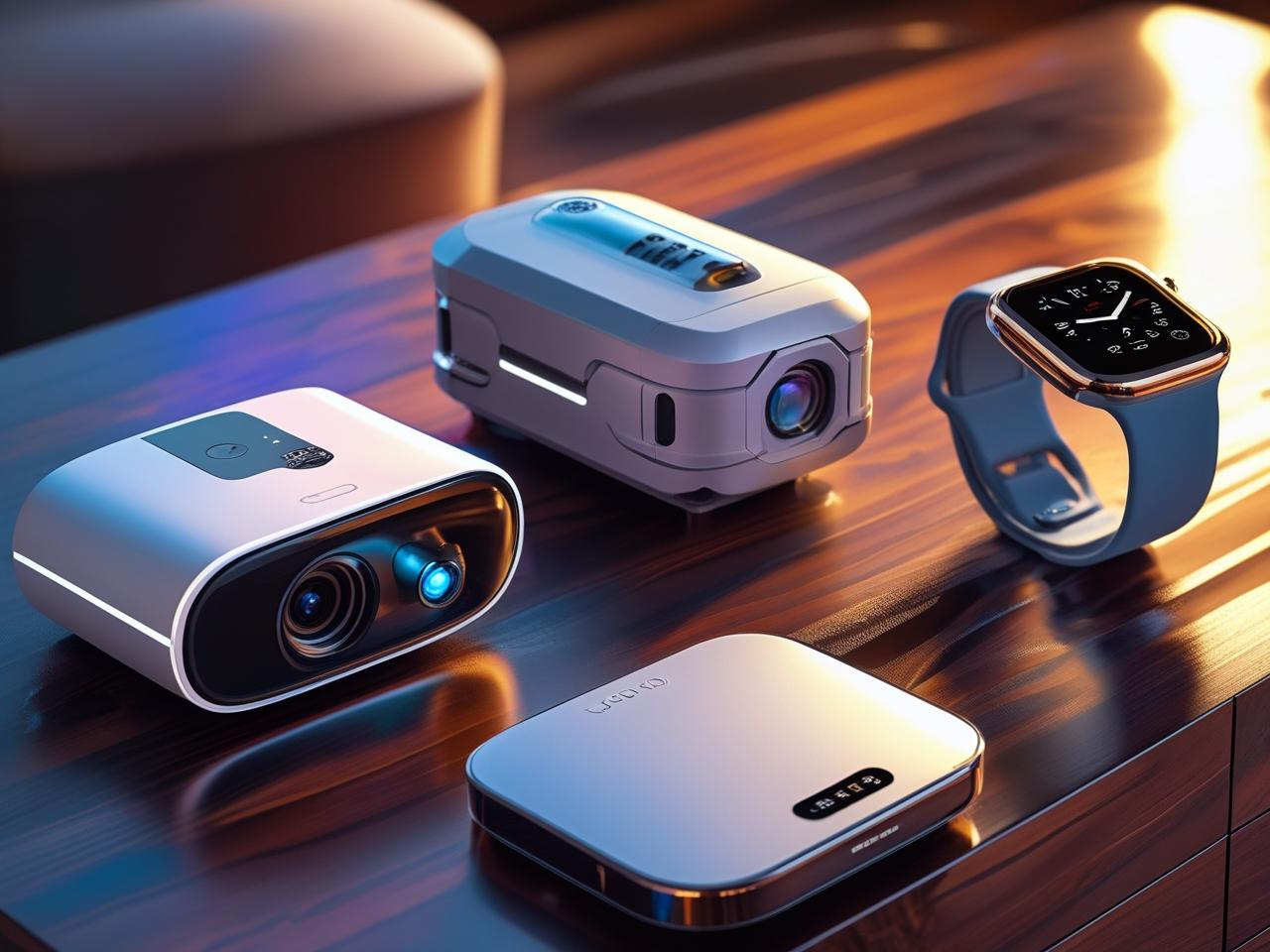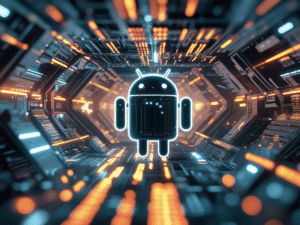Table of Contents
ToggleBest Tech Gadgets of 2025
The digital world of 2025 is full with innovative ideas that mix AI, sustainability, portability, and ease of use in ways that have never been seen before. Here are the best tech devices of 2025 that are creating news and transforming lives. They include wearables that can tell you about health problems before they happen and foldable laptops that don’t fit into traditional shapes.
1. Samsung FlexNote Z
The Samsung FlexNote Z is a laptop-tablet hybrid that can be folded up to fit into a small 12-inch device. It has a 17-inch OLED screen. It has changed the mentality of working from anyplace by combining great specs and portability. It has stylus support and productivity capabilities that use AI to make things easier for professionals, students, and artists.
2. Humane AI
The Humane is a small, wearable AI assistant that can take the place of your phone in various scenarios. It doesn’t have a screen, but it can project content onto your hand or other surfaces and respond to voice commands. It can translate conversations, provide you information in real time, or help you find your way—all without having to grab for your phone.
3. Meta Ray-Ban Smart Glasses 2.0
The second generation of Meta and Ray-Ban’s smart glasses have a traditional look with tastefully built-in features like hands-free photo and video capture, music streaming, voice assistant access, and real-time translation. They are both stylish and useful because they have improved sound quality and lighter frames.
4. Clicks Creator Keyboard for iPhone
A lot of content creators are going crazy for this iPhone case with a physical keyboard. The Clicks Creator Keyboard gives back tactile typing, but with a twist: you can make your own shortcuts for editing, uploading, and more. It’s perfect for people who use TikTok, YouTube, and other social media sites on the fly.
5. DJI Avata 2 FPV Drone
The DJI Avata 2 makes it possible for everyone to fly drones in a cinematic first-person view. It has better camera stabilization, an immersive FPV headset, and AI-assisted controls that make it easy for beginners to use without losing pro-level video quality.
6. LG Transparent LED TV
Finally, TVs are more than just screens. The LG Transparent LED fits in with any style and looks like a piece of glass when it’s not in use. It’s great for homes of the future, art shows, or high-end spaces. When you turn it on, it shows amazing 4K pictures with bezels that are almost invisible.
Conclusion
The top tech gadgets of 2025 show how much technology has become a part of our daily life. These gadgets aren’t simply neat; they change everything. The future is happening right in front of our eyes, and it’s more fascinating than ever. It will make things easier, better for our health, link us better, and provide us immersive experiences.
Foldable Phones
The smartphone business has seen a lot of new things in the last several years, but foldable phones are some of the most interesting and futuristic. These high-tech gadgets were once only a dream in science fiction, but they are now a reality and will change the way we think about mobile technology. Foldable phones are pushing the limits of design, usefulness, and innovation. They can do things like multitask on two screens and fit in your pocket.
What Are Foldable Phones?
Foldable phones are smartphones with screens that can bend or fold in different ways. This lets the device change from a small phone to a bigger screen, like a tablet. Advanced OLED (Organic Light Emitting Diode) technology and hinge mechanisms that can handle millions of folds make this possible.
Key Players in the Foldable Market
Several big IT companies are now in the race to make foldable phones:
Samsung Galaxy Z Fold and Z Flip Series:
Samsung’s Z Fold and Z Flip series have been the best-selling phones on the market. They have big interior displays and small designs. For example, the Z Fold opens like a book to show a screen the size of a tablet.
Huawei Mate X Series:
Huawei’s foldables have out-folding screens and cutting-edge camera setups, however they are not widely available around the world.
Google Pixel Fold:
The Google Pixel Fold offers strong Android integration and focuses on making sure that software works well on both of its panels.
OnePlus Open:
These devices have great hardware and sleek looks, and they often cost less than other brands.
Advantages of Foldable Phones
Larger Display in a Compact Form
Foldables are the best of both worlds: they fit in your pocket and open up to a big screen for gaming, reading, or doing more than one thing at once.
Multitasking
Foldable phones make it easy to get work done on the go with features like split-screen and floating apps. Some even let you use three apps at the same time.
Innovation-Driven Appeal
Foldables are popular with tech fans who demand the newest and best. They are a hallmark of the most modern design and engineering.
Challenges and Drawbacks
Durability Concerns
Foldable screens are getting better, although they are still more brittle than regular ones. Dust and wear over time can damage hinges and flexible displays.
Higher Cost
Foldable phones are high-end devices that usually cost a lot more than flagship smartphones.
Software Optimization
Not all apps work well with folding displays, which can make the user experience inconsistent. However, things are getting better all the time.
The Future of Foldable Phones
The market for foldable phones is increasing gradually. As the technology gets better, pricing should go down and the phones should last longer. In the future, we might even see panels that can be rolled or slid, where the displays get bigger instead of smaller. Also, as app developers catch up, using software will grow easier and more natural.
Foldable phones could become as widespread as today’s touchscreen slabs in the next few years, especially since mobile gaming, content production, and productivity all need bigger screens.
Conclusion
Foldable phones are a big step forward in how smartphones look and work. They are still getting used to the mainstream market, but there is no denying their potential. As technology keeps getting better, these gadgets could not only be a luxury for early adopters; they could become the norm for everyone.
Voice Assistants and Smart Devices
Voice assistants and smart devices have become key players in how we connect with the digital world as technology continues to change. These technologies have become a normal part of our homes, businesses, and daily lives. They can turn on lights with a single command, manage calendars, and provide us quick information.
What Are Voice Assistants and Smart Devices?
Voice assistants are AI-powered software that can recognize and follow voice commands. Alexa from Amazon, Siri from Apple, Google Assistant, and Cortana from Microsoft are all well-known examples. Smart devices, which are gadgets that link to the internet and one other to give improved capabilities, automation, and remote control, usually have them built in. Smart speakers, thermostats, lights, TVs, refrigerators, security systems, and even autos are some of these.
How Do They Work?
Natural language processing (NLP) is what voice assistants utilize to understand what people say. When you say a command, the assistant interprets what you said, looks for an appropriate answer or action on a device, and answers in real time. Wi-Fi or Bluetooth connects smart devices to each other, which is part of what is called the Internet of Things (IoT).
Key Benefits
Convenience:
Users can manage several devices without using their hands, which saves time and effort.
Efficiency:
You can automate everyday chores like sending messages, setting alarms, or checking the weather.
Accessibility:
They are especially helpful for older people or people with physical limitations.
Voice assistants can turn on and off lights, heat, and even appliances, making houses smarter and using less energy.
Voice technology can aid with multitasking, manage calendars, and take notes at work.
Popular Applications
Smart homes use voice assistants to operate things like smart thermostats (like Nest), smart lighting (like Philips Hue), and smart locks.
Entertainment:
Users can use voice commands to play music, watch videos, and operate TVs.
Smartwatches:
Smartwatches and fitness bands may keep track of your activities and even give you audio feedback on your health goals.
Shopping and Reminders:
Assistants can make grocery lists, set reminders, or buy things online.
Navigation:
Smart car systems can now give you voice navigation, traffic updates, and even let you make calls without using your hands.
Privacy and Security Concerns
These technologies are useful, but they do make people wonder about their privacy. People are worried about data collecting and possible exploitation because voice assistants are continually “listening” for a wake word. Manufacturers are trying to increase encryption, give users more control over their data, and make things more clear.
Future Trends
With AI and machine learning getting better all the time, voice assistants and smart devices will have a bright future. Expected trends are:
More personalized answers and routines.
More use in fields like healthcare, education, and retail.
Better support for many languages and a better grasp of context.
Working with new technologies like robotics and augmented reality (AR).
Conclusion
Smart devices and voice assistants are changing the way people live today by making technology easier to use and more connected. As these tools get smarter and safer, they will play an ever bigger role in making settings that are connected, efficient, and tailored to each person. For both people and organizations, using this technology means moving into a future that is more automated, smart, and easy to use.



